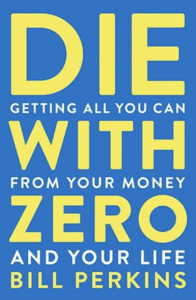The VBAL ETF is a balanced ETF fund providing exposure to both equity and fixed income securities.
The ETF offers long-term capital growth as well as income to investors. The fund invests in one or more ETFs managed by the Vanguard Canada or its affiliates.
VBAL maintains a long-term strategic asset allocation of equity (~60%) and fixed income (~40%) securities. The underlying funds provide exposure to broad-based equity and fixed income markets.
It’s considered a one-stop balanced ETF for investors.
Pros of Vanguard VBAL ETF
- Invests in more than 13,000 stocks and 17,400 bonds currently.
- Passive balanced portfolio.
- VBAL provides exposure to ETFs that are diversified across regions and asset classes.
- Provides both long-term capital growth and a moderate level of income.
Cons of Vanguard VBAL ETF
- A little expensive ETF with an MER is 0.24%. Its contemporaries iShares XBAL, Blackrock’s ZBAL, and Horizon’s HBAL, all have lower MERs.
- VBAL has a relatively lower distribution yield of 1.66% compared to XBAL’s relatively higher yield of 1.76%.
- Provides exposure to equity ETFs managed only by Vanguard.
Vanguard VBAL ETF Facts
- Inception Date: January 25, 2018
- Benchmark: nternal Composite
- Net Assets: $1,774M
- MER: 0.24%
- Distribution Yield: 1.66%
- Dividend Schedule: Quarterly
Vanguard VBAL ETF MER – Management Expense Ratio
VBAL’s management fee stands at 0.22% and MER is 0.24%.Its contemporaries iShares XBAL, Blackrock’s ZBAL, and Horizon’s HBAL have MERs of 0.20%, 0.20%, and 0.15%, respectively.
The MER is what Vanguard takes to manage the fund for you. It’s much cheaper than mutual funds and in some cases cheaper than investing on your own.
Mutual funds can charge over 2% and it robs you of your returns. It’s time to ditch your mutual funds and switch to ETF ASAP. Many brokers such as Questrade offer free ETFs. Couple the free ETFs with low MER and you are ahead of many.
Vanguard VBAL ETF Performance
The annual rate of return for Vanguard VBAL ETF since inception is more than 7%. It has, however, underperformed the broader S&P500 index in the last two years.
Investing in the S&P500 is simple and works. The only question is whether you hedge or not.
The debare over CAD-Hedged or not is out there and most of it is based on your understanding and expectation of the USD currency. It’s not worth fussing over it in my opinion.
Take your TFSA account as an example. The rules are the same for everyone and I mean everyone. The growth is ultimately a factor of your investment performance provided you make your TFSA contribution limit every year. The annual performance of an ETF matters as you can see below the growth over 20+ years.
Vanguard VBAL ETF Holdings
Below are the top ten holdings of VBAL ETF at the time of writing. VBAL ETF invests ~60% in equities and ~40% in fixed income. The portfolio asset mix may be reconstituted and rebalanced from time to time at the discretion of the sub-advisor.
The ETF has ~84% exposure to large-cap funds, followed by ~6% in medium-cap funds, and ~3.6% in small-cap funds. The balance allocation is in medium-large and medium-small cap funds.
VBAL invests in financials (20%), technology (~17%), industrials (~13%), consumer discretionary (~13%), healthcare (~8%), basic materials (~7%), energy, utilities, consumer staples, telecom, real estate sectors. Some of its top holdings are RBC, Shopify, TD Bank, Microsoft, Apple, Amazon, Bank of Nova Scotia, CNR, etc.
| wdt_ID | Sector | Ratio |
|---|---|---|
| 1 | VAB - Canadian Aggregate Bond Index ETF | 23.23 |
| 3 | VIU - FTSE Developed All Cap ex North America Index ETF | 12.16 |
| 4 | VCN - FTSE Canada All Cap Index ETF | 18.17 |
| 5 | VEE - FTSE Emerging Markets All Cap Index ETF | 4.52 |
| 6 | VBG - Global ex-U.S. Aggregate Bond Index ETF (CAD-hedged) | 9.11 |
| 7 | ||
| 9 | VBU - U.S. Aggregate Bond Index ETF (CAD-hedged) | 7.18 |
| 12 | VUN - U.S. Total Market Index ETF | 25.63 |
Why hold Vanguard VBAL ETF
VBAL offers a balanced allocation of 60% equity and 40% bonds. It may be what you are looking for and it could be a good fit.
The ETF provides a good opportunity to long-term investors who want to limit their investment risk, as opposed to investing 100% either in equity or in bonds. Its fees, automatic portfolio rebalance, and asset and region diversification is cherry on top.
If you want the dividends, it’s not clear you will get the same growth but the the best banks and the best utility stocks will give you more income.


